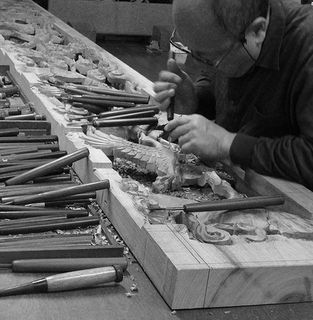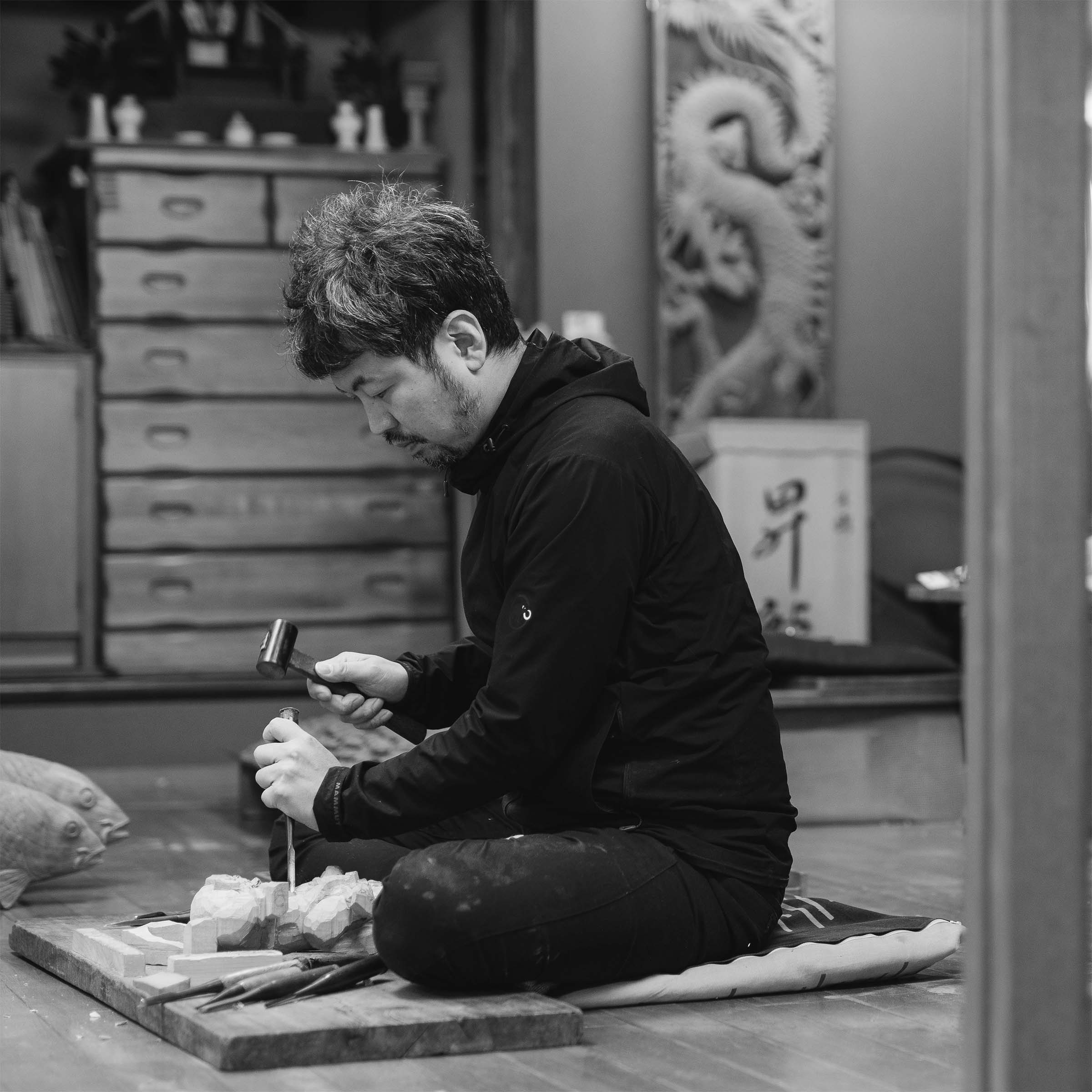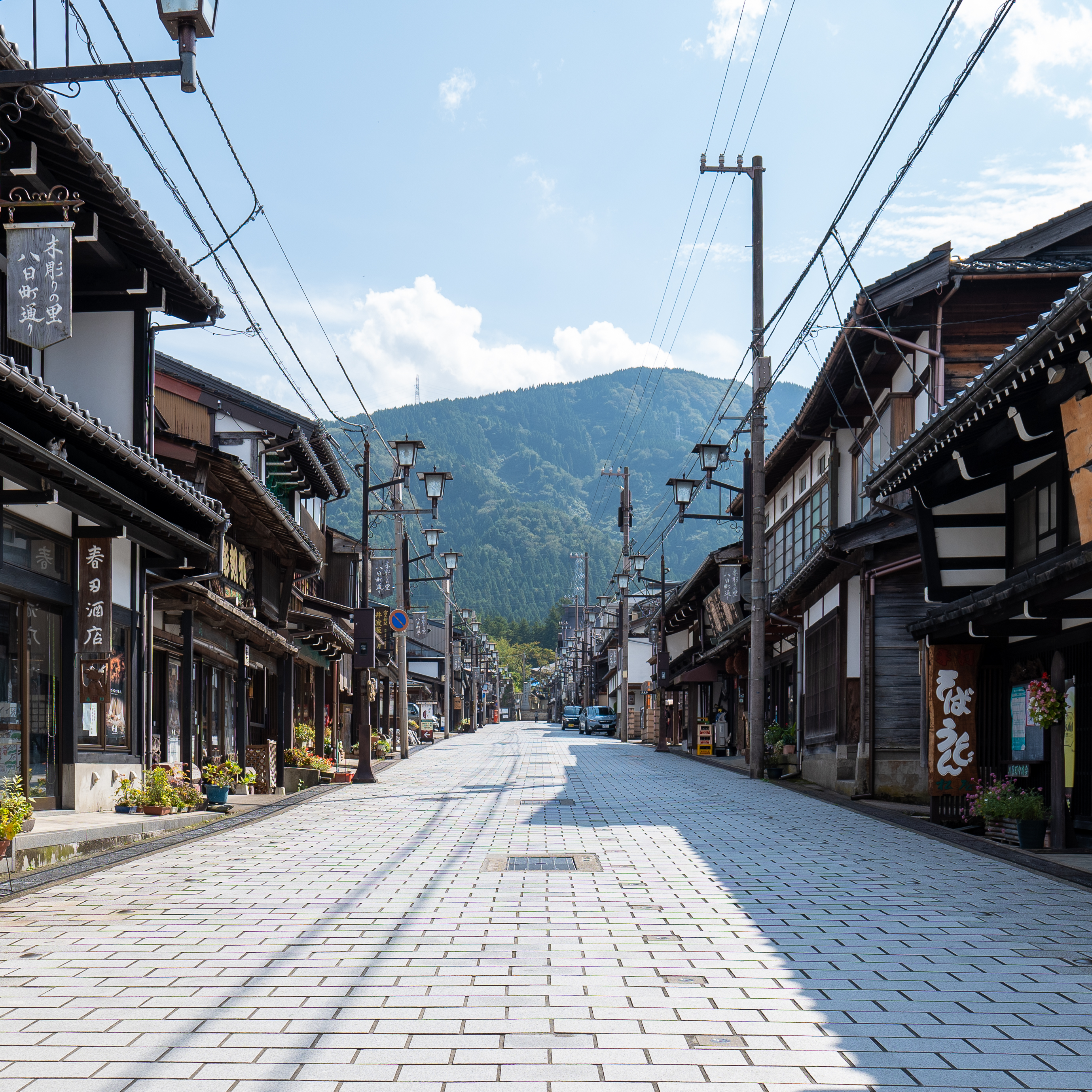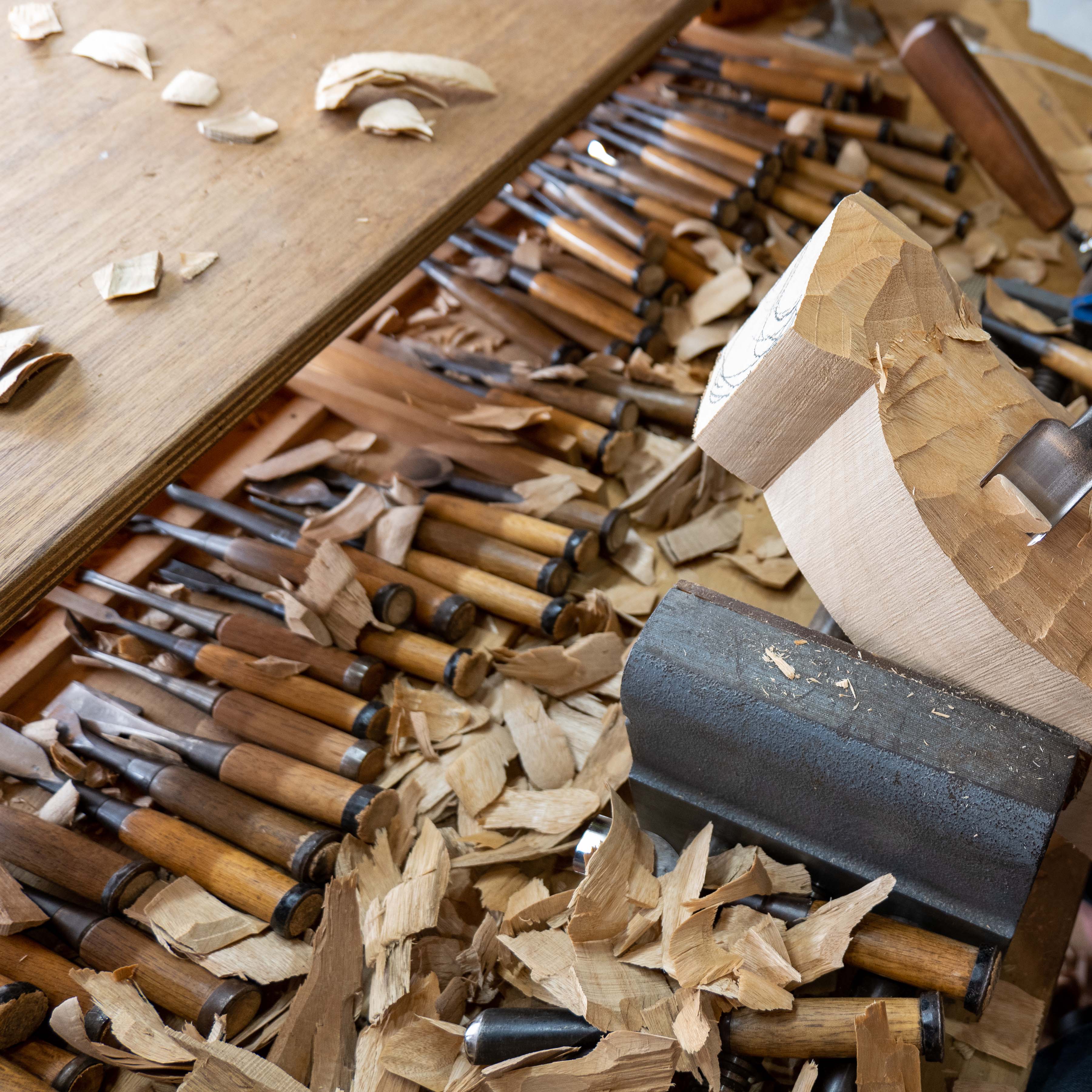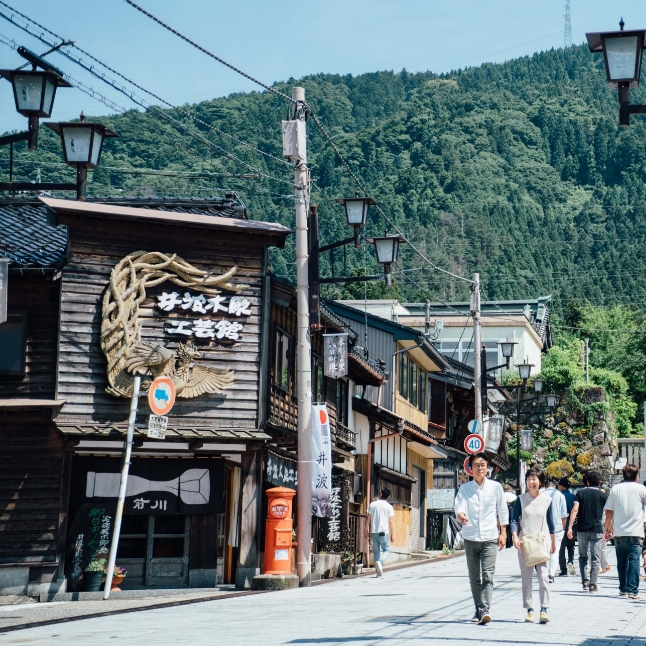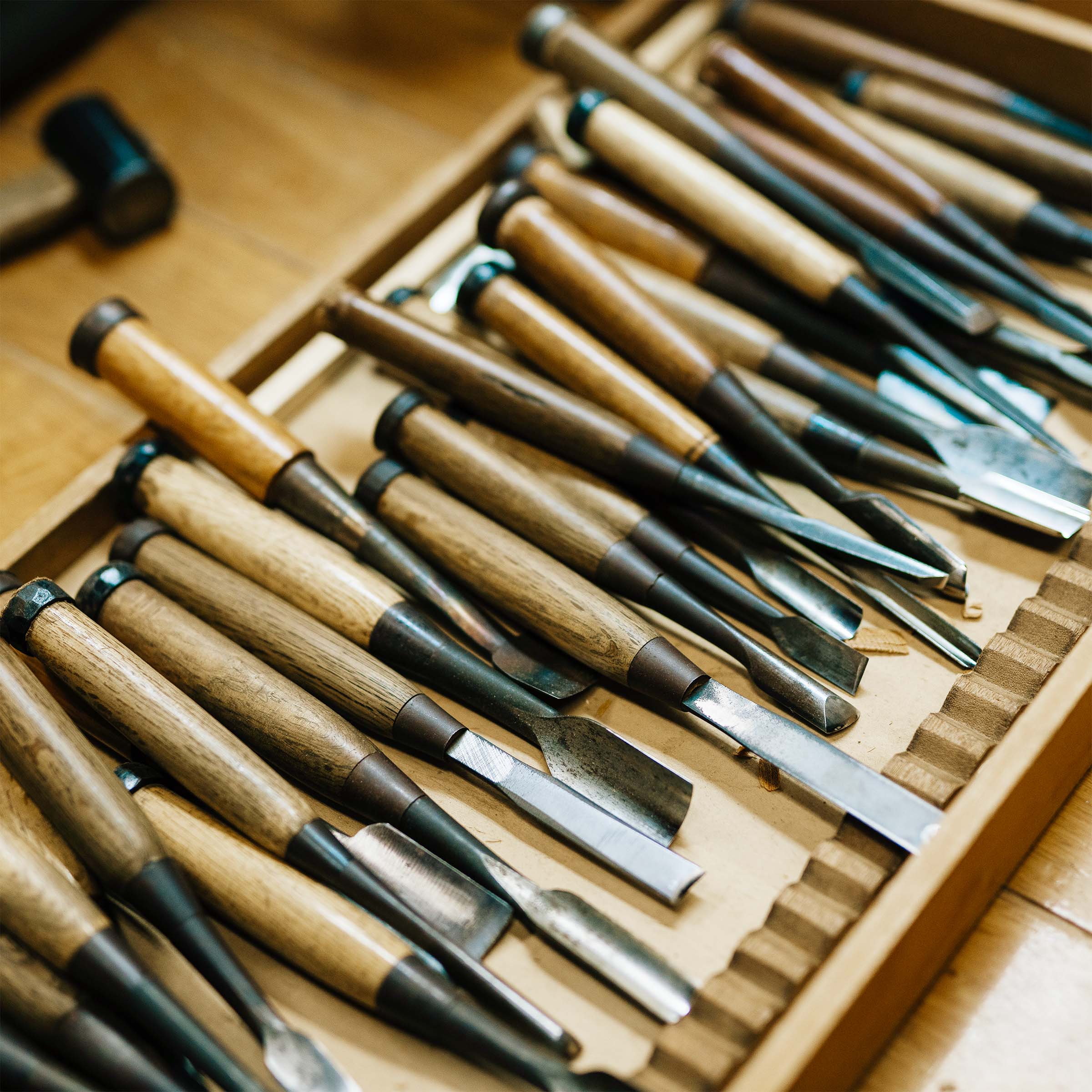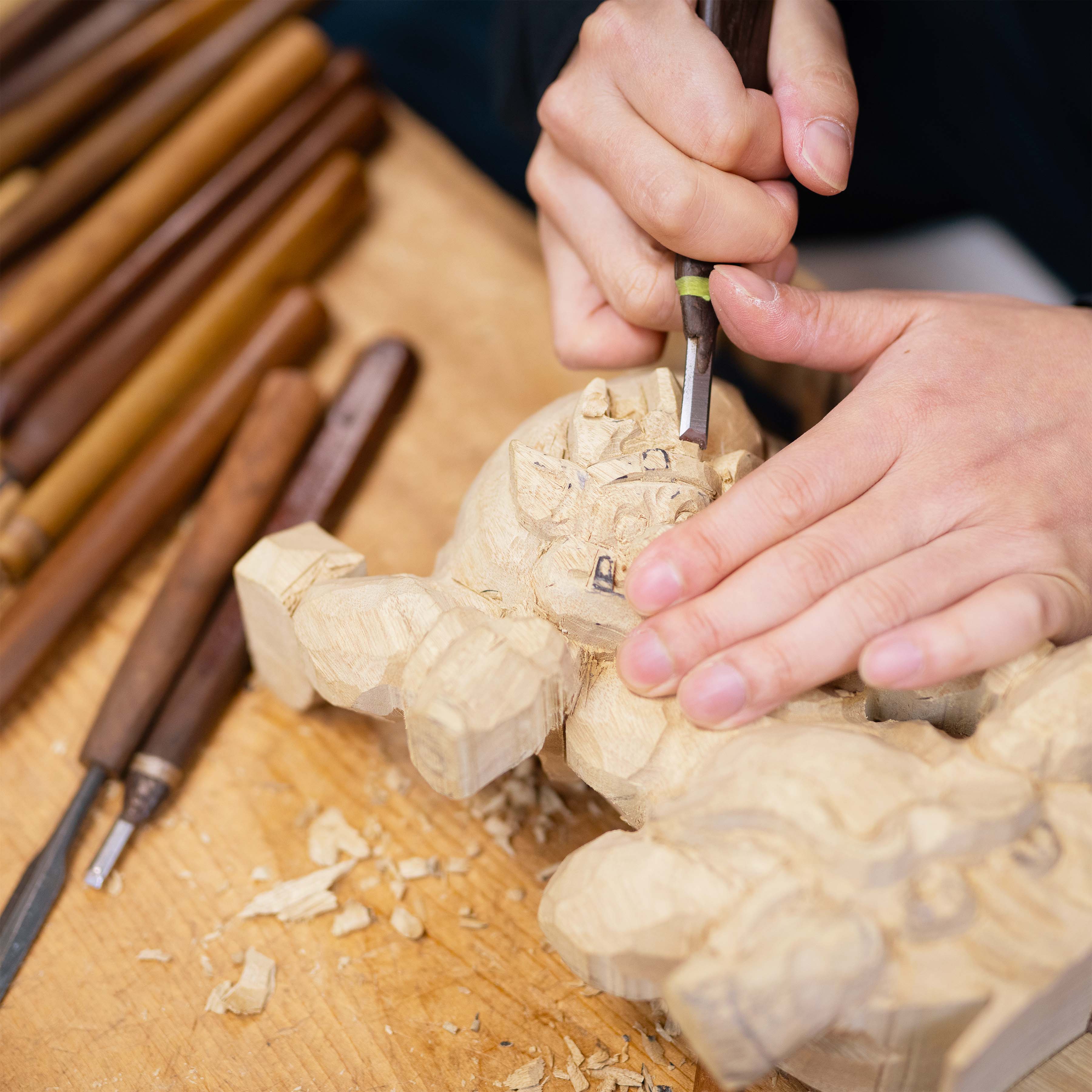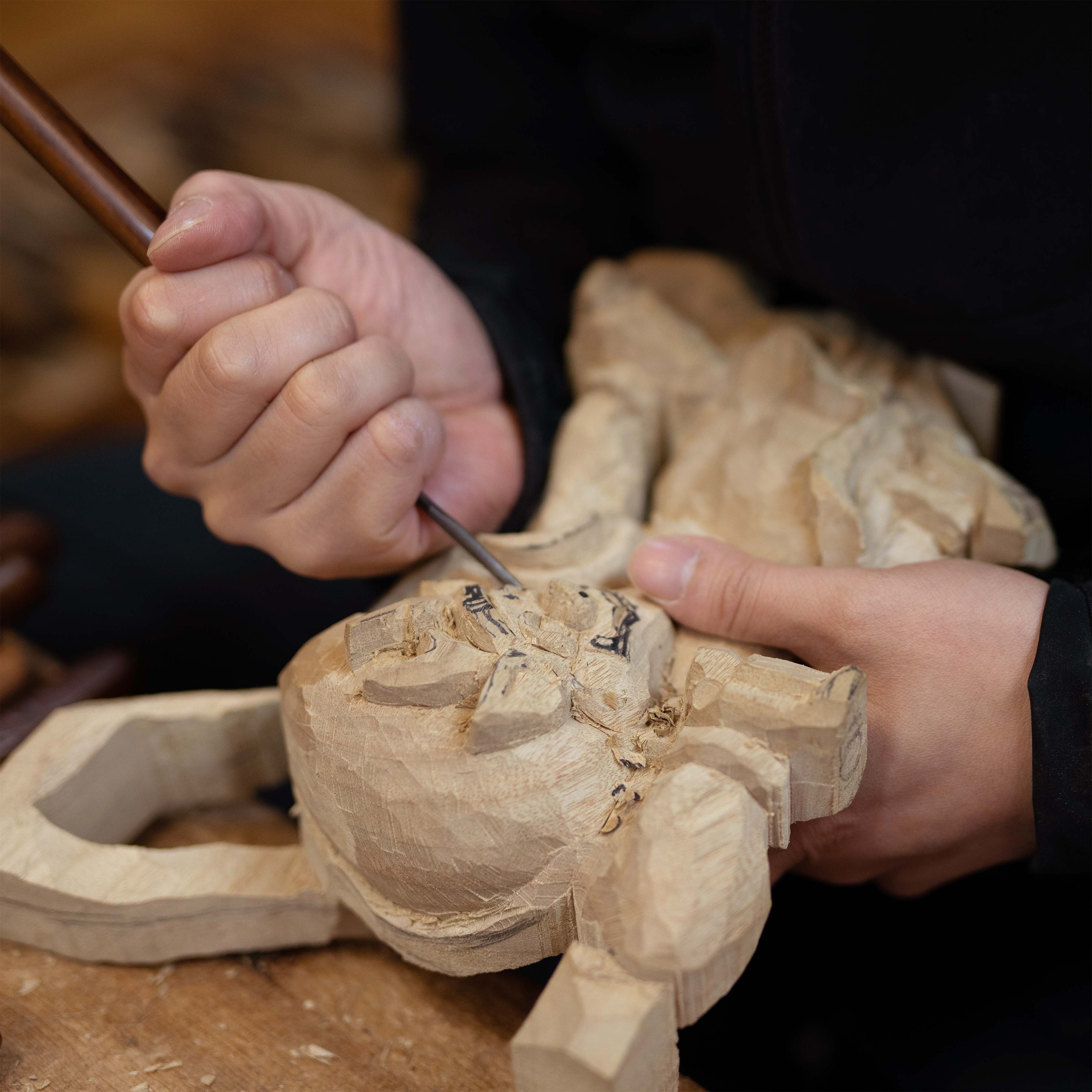井波彫刻は今から約250年前、焼失した井波別院瑞泉寺を再建するため、京都の本山より派遣された御用彫刻師・前川三四郎が、地元の大工に彫刻の技法を伝えたことに始まります。
社寺仏閣の装飾彫刻から端を発した井波彫刻ですが、その後、住宅用の欄間彫刻や置物彫刻など一般向けの製品も考え出され、その精緻な技術力により、昭和50年には国の伝統的工芸品として指定を受けました。
花鳥風月、縁起物、人物等を題材に、両面から「透かし深彫り」を施したものが多く見られ、200本以上のノミや彫刻刀を駆使する高度な技術を擁します。
Inami carving started about 250 years ago when Sanshiro Maekawa, an official carver dispatched from the head temple in Kyoto to rebuild the burned down Inami Betsuin Zuisenji Temple, taught carving techniques to local carpenters.
Although Inami carving started out as decorative carvings for temples and shrines, it was later developed into products for the general public, such as Ranma carvings for houses and ornamental carvings, and was designated as a traditional craft by the government in 1975 for its exquisite techniques.
Its exquisite techniques, Many of the carvings are based on themes such as flowers, birds, wind, moon, lucky charms, and people, and are deeply carved with openwork from both sides.

